-
 Bitcoin
Bitcoin $114400
1.32% -
 Ethereum
Ethereum $3499
2.20% -
 XRP
XRP $2.922
4.26% -
 Tether USDt
Tether USDt $0.0000
0.03% -
 BNB
BNB $752.6
1.53% -
 Solana
Solana $161.8
1.64% -
 USDC
USDC $0.9999
0.01% -
 TRON
TRON $0.3267
1.32% -
 Dogecoin
Dogecoin $0.1991
3.02% -
 Cardano
Cardano $0.7251
3.29% -
 Hyperliquid
Hyperliquid $38.32
3.36% -
 Stellar
Stellar $0.3972
7.58% -
 Sui
Sui $3.437
2.74% -
 Chainlink
Chainlink $16.29
3.65% -
 Bitcoin Cash
Bitcoin Cash $545.3
3.70% -
 Hedera
Hedera $0.2482
7.49% -
 Ethena USDe
Ethena USDe $1.001
0.03% -
 Avalanche
Avalanche $21.40
2.02% -
 Toncoin
Toncoin $3.579
1.56% -
 Litecoin
Litecoin $109.3
2.20% -
 UNUS SED LEO
UNUS SED LEO $8.951
-0.18% -
 Shiba Inu
Shiba Inu $0.00001220
2.75% -
 Polkadot
Polkadot $3.613
2.99% -
 Uniswap
Uniswap $9.173
3.78% -
 Monero
Monero $302.6
2.62% -
 Dai
Dai $0.0000
0.00% -
 Bitget Token
Bitget Token $4.320
1.52% -
 Pepe
Pepe $0.00001048
3.40% -
 Cronos
Cronos $0.1314
4.33% -
 Aave
Aave $259.4
3.54%
Why can some NFT artworks be sold at sky-high prices?
High NFT prices are driven by rarity, artist reputation, unique utility, speculation, cultural significance, blockchain tech, media hype, economic factors, psychology, and legal environment.
Apr 04, 2025 at 11:56 pm
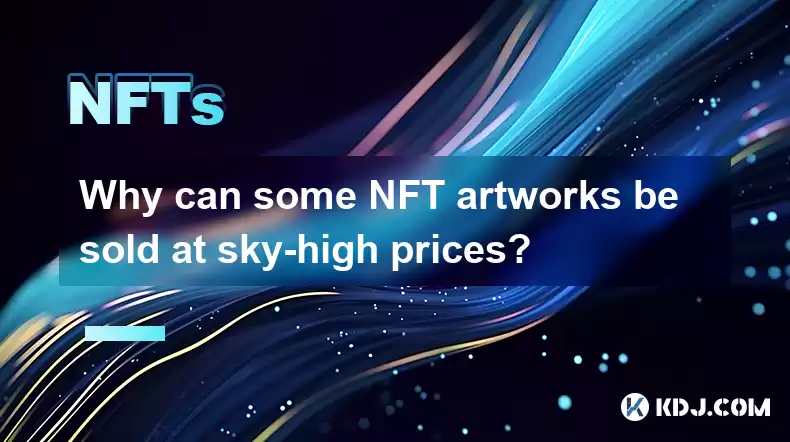
The world of Non-Fungible Tokens (NFTs) has seen some artworks sold for astonishingly high prices, leaving many to wonder why such valuations occur. The reasons behind these sky-high prices are multifaceted, involving aspects of rarity, the reputation of the artist, the uniqueness of the artwork, and the speculative nature of the market. Understanding these factors can provide insight into the dynamics of NFT valuations and the broader cryptocurrency ecosystem.
Rarity and Scarcity
One of the primary drivers of high NFT prices is the concept of rarity and scarcity. Just like physical art, the fewer copies of a particular NFT exist, the more valuable it becomes. Many NFT projects implement mechanisms to ensure scarcity, such as limited editions or unique traits. For instance, the Bored Ape Yacht Club NFTs are highly valued partly because each Ape is unique, with different combinations of traits that can't be replicated.
- Rarity is often determined by algorithms that assess the uniqueness of an NFT's attributes.
- Projects like CryptoPunks have a fixed supply, making each Punk more valuable over time as demand increases.
- Some NFTs come with additional perks, such as access to exclusive events or communities, adding to their perceived value.
The Artist's Reputation
The reputation of the artist behind an NFT can significantly influence its price. Established artists or those with a strong following can command higher prices for their work. When a well-known artist releases an NFT, collectors and investors are often willing to pay a premium due to the artist's track record and the perceived future value of the work.
- Artists like Beeple have gained fame in the NFT space, with his work "Everydays: The First 5000 Days" selling for over $69 million.
- New artists can also see their NFTs rise in value if they gain recognition or are endorsed by influential figures in the crypto community.
- Collaborations between established artists and NFT projects can drive up prices due to the combined appeal of both the artist and the project.
Unique Features and Utility
NFTs that offer unique features or utility beyond just being a piece of art can command higher prices. These can include access to exclusive content, membership in a community, or even governance rights within a decentralized organization. The added value of these features can justify higher prices for collectors and investors looking for more than just aesthetic appeal.
- Decentraland NFTs, for example, represent virtual land that can be used to build and monetize digital experiences.
- Some NFTs grant holders voting rights in the project's future direction, adding a layer of utility and potential financial return.
- Projects like NBA Top Shot offer NFTs that are not only collectible but also provide fans with unique experiences and memorabilia.
Speculation and Market Dynamics
The speculative nature of the cryptocurrency market plays a significant role in the high prices of some NFTs. Investors and collectors often buy NFTs with the expectation that their value will increase over time, driven by hype, trends, and market sentiment. This speculative bubble can lead to rapid price increases, sometimes reaching seemingly irrational levels.
- FOMO (Fear Of Missing Out) can drive up prices as people rush to buy into trending NFTs.
- Social media and influencer endorsements can create sudden spikes in demand and price.
- Market dynamics, such as liquidity and trading volume, can also influence the perceived value of an NFT.
Cultural and Social Significance
Some NFTs gain value due to their cultural or social significance. Artworks that capture a moment in time, reflect societal trends, or resonate with a particular community can see their prices soar. The emotional connection and storytelling aspect of these NFTs can drive demand and justify higher prices.
- Meme culture has led to the rise of NFTs like Nyan Cat, which sold for nearly $600,000 due to its iconic status.
- NFTs that represent significant moments in the crypto world, such as the first tweet by Jack Dorsey, can command high prices due to their historical value.
- Community-driven projects like Art Blocks have seen success by tapping into the creative and collaborative spirit of the NFT community.
Technological Innovation
The underlying technology of NFTs, such as blockchain and smart contracts, adds another layer of value. The transparency, security, and immutability of blockchain technology can increase trust in the authenticity and ownership of an NFT, thereby justifying higher prices. Additionally, innovations in how NFTs are created and interacted with can drive up their value.
- Smart contracts enable unique features like royalties for artists, ensuring they receive a percentage of future sales.
- The use of Ethereum and other blockchains provides a secure and verifiable way to track ownership and provenance.
- Innovations like dynamic NFTs that change over time or based on user interaction can add to their appeal and value.
Market Hype and Media Attention
The role of market hype and media attention cannot be understated when it comes to the high prices of some NFTs. When an NFT project or artwork gains significant media coverage, it can lead to increased interest and demand, driving up prices. The viral nature of social media can amplify this effect, creating a feedback loop of hype and price increases.
- Celebrity endorsements can lead to sudden spikes in NFT prices, as seen with Eminem and Snoop Dogg entering the NFT space.
- Media coverage of high-profile sales, like Beeple's record-breaking auction, can create a perception of value and drive further interest.
- The crypto community itself plays a role in spreading hype through platforms like Twitter and Discord, where trends and projects are discussed and promoted.
Economic Factors
Economic factors such as inflation, disposable income, and the overall health of the cryptocurrency market can influence NFT prices. During times of economic uncertainty, investors may turn to NFTs as a hedge against inflation or as a speculative investment. The availability of capital and the willingness of investors to spend on digital assets can drive up prices.
- Inflation can lead investors to seek alternative assets like NFTs, driving up demand and prices.
- The crypto market's performance can influence investor sentiment and willingness to invest in NFTs.
- Disposable income levels among potential buyers can impact the prices they are willing to pay for NFTs.
Psychological Factors
Psychological factors such as the desire for status, the thrill of collecting, and the fear of missing out can also contribute to high NFT prices. Collectors and investors may be willing to pay more for an NFT if it enhances their social standing or satisfies their collecting instincts. The emotional connection to an artwork or project can drive up its perceived value.
- The status symbol aspect of owning a high-value NFT can drive demand among collectors.
- The thrill of the hunt for rare or unique NFTs can lead to higher prices as collectors compete for limited items.
- Emotional attachment to an artwork or the story behind it can justify higher prices for some buyers.
Legal and Regulatory Environment
The legal and regulatory environment surrounding NFTs can also impact their prices. Clear regulations can provide confidence to investors, while uncertainty can lead to volatility. The ability to enforce intellectual property rights and the legal status of NFTs as assets can influence their perceived value and market dynamics.
- Regulatory clarity can increase investor confidence and drive up prices by reducing perceived risk.
- Intellectual property rights and the ability to enforce them can add value to NFTs, especially for artists and creators.
- Legal disputes over ownership or royalties can impact the perceived value and marketability of NFTs.
Frequently Asked Questions
Q: What makes an NFT rare?
A: An NFT's rarity is determined by its uniqueness and scarcity. This can be due to limited editions, unique traits, or algorithms that assess the rarity of an NFT's attributes. Projects like Bored Ape Yacht Club and CryptoPunks are known for their rarity, which contributes to their high value.
Q: How does an artist's reputation affect NFT prices?
A: An artist's reputation can significantly impact NFT prices. Established artists or those with a strong following can command higher prices due to their track record and the perceived future value of their work. Artists like Beeple have seen their NFTs sell for millions due to their reputation.
Q: What additional value can NFTs provide beyond being art?
A: NFTs can offer utility beyond just being art, such as access to exclusive content, membership in a community, or governance rights. Projects like Decentraland and NBA Top Shot provide unique experiences and benefits to NFT holders, adding to their value.
Q: How does speculation influence NFT prices?
A: Speculation plays a significant role in NFT prices, driven by market hype, trends, and investor sentiment. FOMO and social media endorsements can lead to rapid price increases, sometimes reaching seemingly irrational levels.
Q: Can cultural significance impact NFT prices?
A: Yes, cultural and social significance can drive up NFT prices. Artworks that capture a moment in time or resonate with a particular community can see increased demand and value. Examples include Nyan Cat and Jack Dorsey's first tweet.
Q: How does blockchain technology add value to NFTs?
A: Blockchain technology adds value to NFTs through transparency, security, and immutability. Smart contracts enable features like royalties, and the use of blockchains like Ethereum provides a verifiable way to track ownership and provenance.
Q: What role does media attention play in NFT prices?
A: Media attention can significantly impact NFT prices by increasing interest and demand. Celebrity endorsements and high-profile sales can create hype and drive up prices, as seen with Beeple's record-breaking auction.
Q: How do economic factors influence NFT prices?
A: Economic factors such as inflation, disposable income, and the overall health of the cryptocurrency market can influence NFT prices. During economic uncertainty, investors may turn to NFTs as a hedge or speculative investment, driving up demand and prices.
Q: What psychological factors contribute to high NFT prices?
A: Psychological factors like the desire for status, the thrill of collecting, and the fear of missing out can contribute to high NFT prices. The emotional connection to an artwork or project can drive up its perceived value among collectors and investors.
Q: How does the legal and regulatory environment impact NFT prices?
A: The legal and regulatory environment can impact NFT prices by providing clarity and confidence to investors. Clear regulations and the ability to enforce intellectual property rights can add value to NFTs, while uncertainty can lead to volatility.
Disclaimer:info@kdj.com
The information provided is not trading advice. kdj.com does not assume any responsibility for any investments made based on the information provided in this article. Cryptocurrencies are highly volatile and it is highly recommended that you invest with caution after thorough research!
If you believe that the content used on this website infringes your copyright, please contact us immediately (info@kdj.com) and we will delete it promptly.
- Cryptocurrency, Altcoins, and Profit Potential: Navigating the Wild West
- 2025-08-04 14:50:11
- Blue Gold & Crypto: Investing Disruption in Precious Metals
- 2025-08-04 14:30:11
- Japan, Metaplanet, and Bitcoin Acquisition: A New Era of Corporate Treasury?
- 2025-08-04 14:30:11
- Coinbase's Buy Rating & Bitcoin's Bold Future: A Canaccord Genuity Perspective
- 2025-08-04 14:50:11
- Coinbase's Buy Rating Maintained by Rosenblatt Securities: A Deep Dive
- 2025-08-04 14:55:11
- Cryptos, Strategic Choices, High Returns: Navigating the Meme Coin Mania
- 2025-08-04 14:55:11
Related knowledge
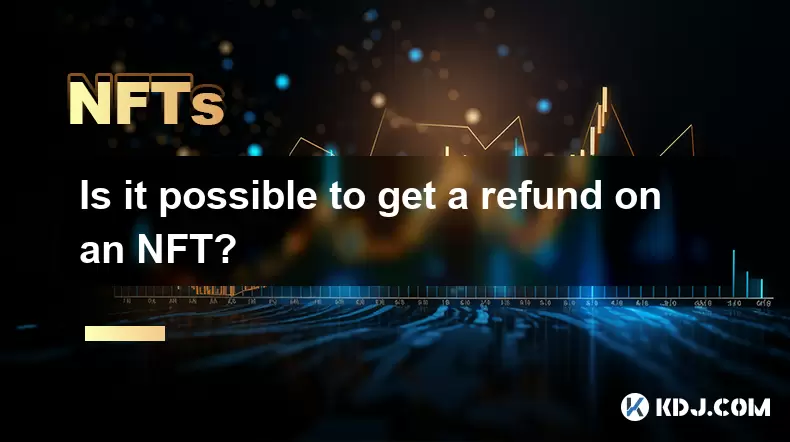
Is it possible to get a refund on an NFT?
Jul 21,2025 at 08:35pm
Understanding NFT Transactions and RefundsWhen you purchase an NFT (Non-Fungible Token), the transaction is typically recorded on a blockchain, making...
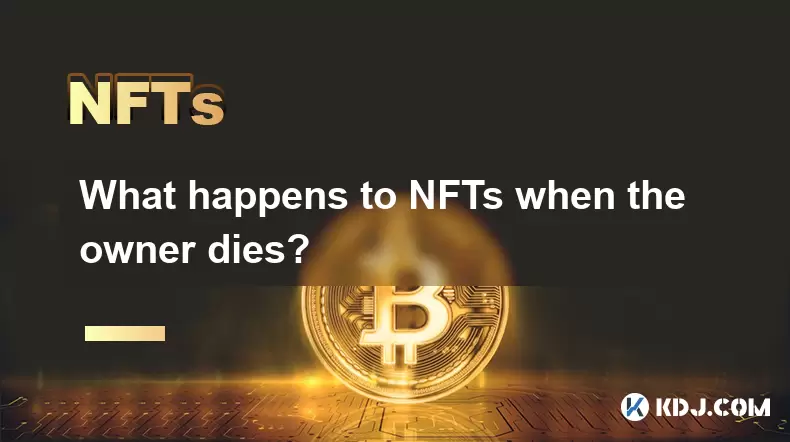
What happens to NFTs when the owner dies?
Jul 22,2025 at 02:43pm
Legal Ownership and Digital AssetsWhen an individual owns NFTs, the question of what happens to these assets upon their death is a pressing one. NFTs ...
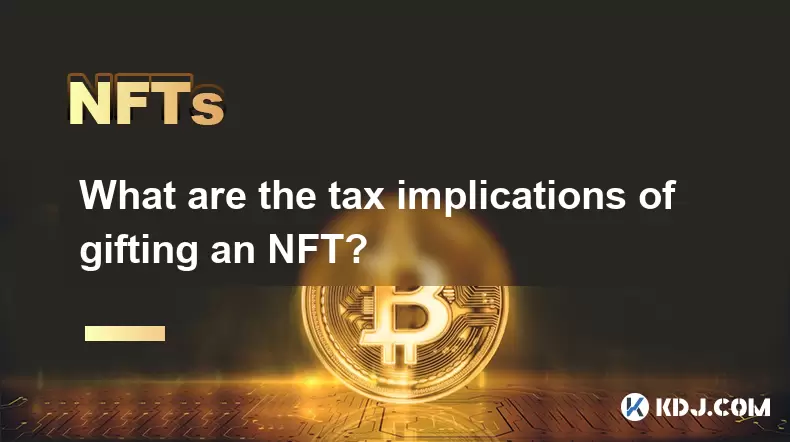
What are the tax implications of gifting an NFT?
Jul 19,2025 at 04:21am
Understanding the Basics of NFT GiftingGifting a Non-Fungible Token (NFT) involves transferring ownership from one individual to another without recei...
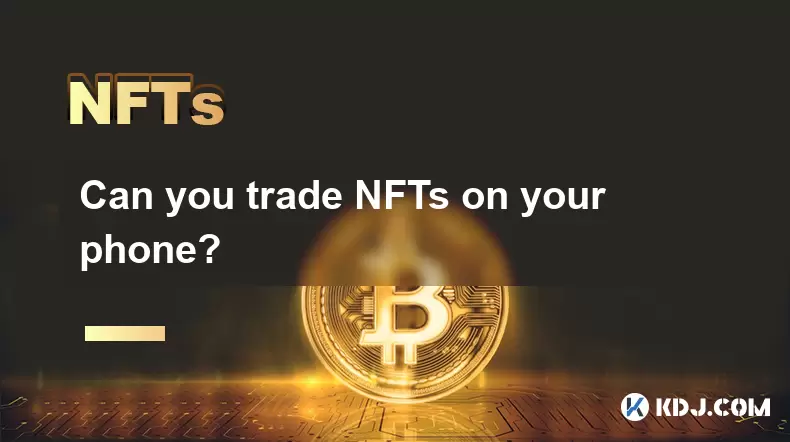
Can you trade NFTs on your phone?
Jul 18,2025 at 04:29am
Trading NFTs on Mobile DevicesYes, you can trade NFTs on your phone, and the process has become increasingly streamlined thanks to a variety of mobile...
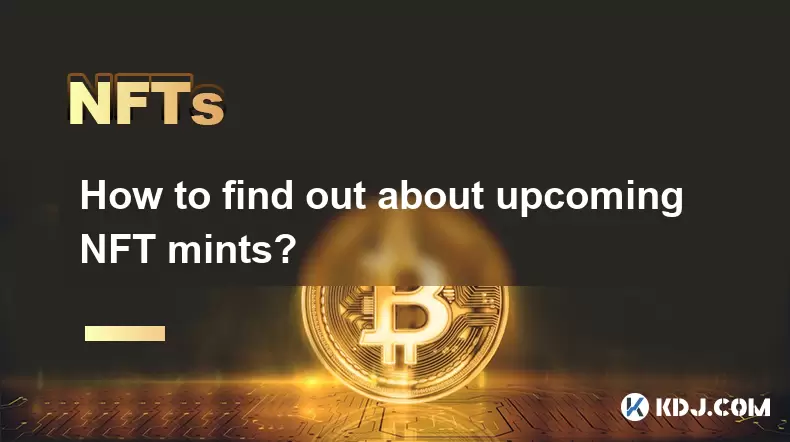
How to find out about upcoming NFT mints?
Jul 18,2025 at 11:50am
Exploring NFT Minting OpportunitiesUnderstanding the landscape of upcoming NFT mints is crucial for collectors, investors, and creators who wish to st...
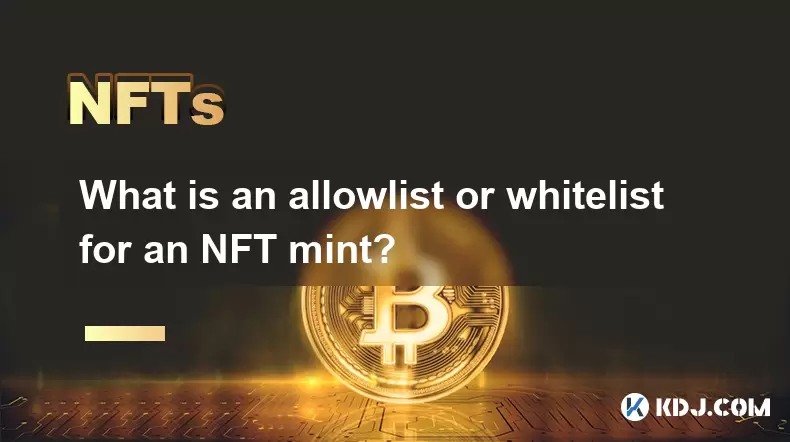
What is an allowlist or whitelist for an NFT mint?
Jul 20,2025 at 07:14pm
Understanding the Concept of an Allowlist for NFT MintingAn allowlist, also commonly referred to as a whitelist, is a mechanism used in the NFT mintin...

Is it possible to get a refund on an NFT?
Jul 21,2025 at 08:35pm
Understanding NFT Transactions and RefundsWhen you purchase an NFT (Non-Fungible Token), the transaction is typically recorded on a blockchain, making...

What happens to NFTs when the owner dies?
Jul 22,2025 at 02:43pm
Legal Ownership and Digital AssetsWhen an individual owns NFTs, the question of what happens to these assets upon their death is a pressing one. NFTs ...

What are the tax implications of gifting an NFT?
Jul 19,2025 at 04:21am
Understanding the Basics of NFT GiftingGifting a Non-Fungible Token (NFT) involves transferring ownership from one individual to another without recei...

Can you trade NFTs on your phone?
Jul 18,2025 at 04:29am
Trading NFTs on Mobile DevicesYes, you can trade NFTs on your phone, and the process has become increasingly streamlined thanks to a variety of mobile...

How to find out about upcoming NFT mints?
Jul 18,2025 at 11:50am
Exploring NFT Minting OpportunitiesUnderstanding the landscape of upcoming NFT mints is crucial for collectors, investors, and creators who wish to st...

What is an allowlist or whitelist for an NFT mint?
Jul 20,2025 at 07:14pm
Understanding the Concept of an Allowlist for NFT MintingAn allowlist, also commonly referred to as a whitelist, is a mechanism used in the NFT mintin...
See all articles

























































































